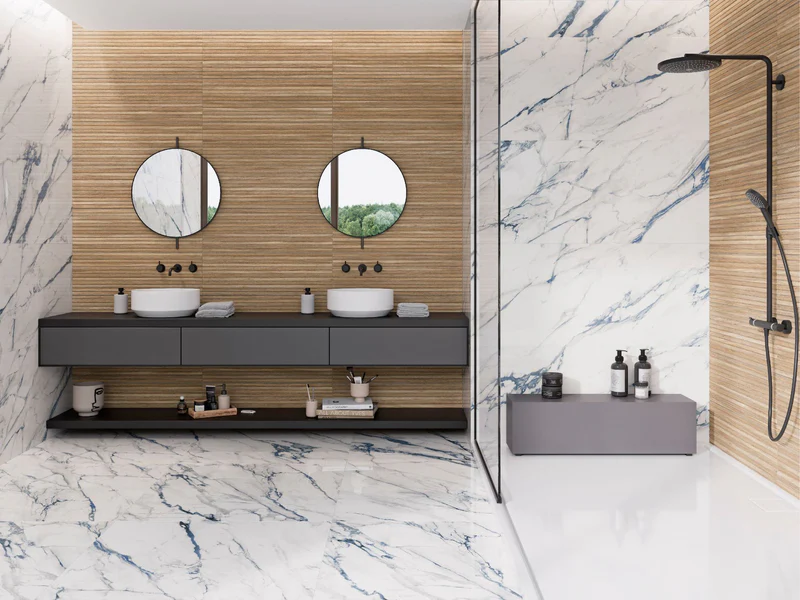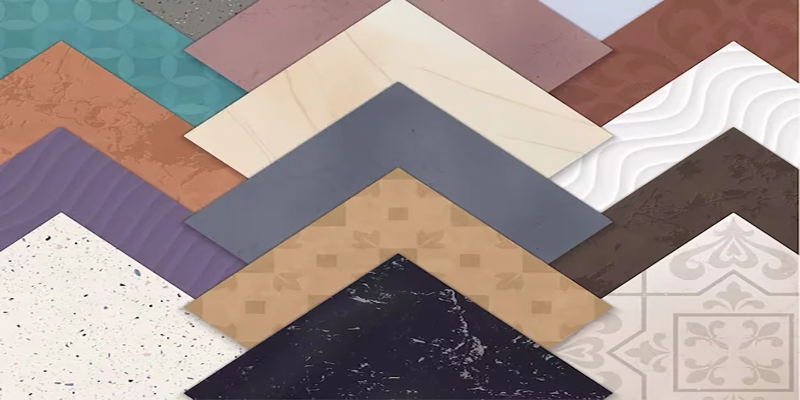One of the most exciting parts of a bathroom renovation is picking the tile.
These days design experts are opting for more unique bathroom looks. Because bathrooms are enclosed spaces, they provide an awesome opportunity for a fun design featuring interesting colors, patterns, and materials. Among them, tile can be a particularly impactful choice with seemingly endless options.
Some of the most popular bathroom tiles
- Porcelain
Porcelain tiles are highly durable and stain-resistant, with collections suitable to install on both walls and floors, including a stylish backsplash.
- Ceramic
Ceramic and porcelain tiles are both durable, timeless choices for kitchens and bathrooms. While they look similar, there are key differences between them. Porcelain is stronger and more resistant to chipping, but that doesn’t mean it’s the best option for your home.
- Marble
Your bathroom and kitchen area tend to come in contact with a lot of germs and bacteria. This is why you need flooring that doesn’t attract or trap these contaminants. Marble flooring naturally contains antibacterial properties. It repels germs and other bacteria.
Related article: Remodeling Your Bathroom

- Mosaic
Mosaics are a beautiful mixture of small pieces of tiles, glass, metal, or natural stone that can be customized in any way to fit the interior or exterior design requirement. What sets mosaics apart from regular tile floors and walls is that you can never predict how each individual tile will look when assembled. This unpredictability gives the entire floor or wall a Sense of Artistry that you can’t achieve with regular tiles.
- Limestone
Limestone is a material that can be used to decorate any space. Tiles made of limestone have beautiful, natural textures since they are made from minerals that naturally settle on the earth’s surface over thousands of years. The tiles can be used inside or out to give a finished, beautiful look to any space.
- Slate
Slate tiles are some of the most beautiful and most functional natural stone tiles around. The exquisite colors, the incredible texture, and the impressive durability make them an excellent addition to any home.
- Vinyl
Vinyl is a popular choice for bathroom floors for very good reason. Vinyl flooring is composed of several layers of materials sandwiched together to create a durable, practical and affordable floor covering.
- Pebble
Pebble tile shower floors transform bathrooms into tranquil retreats. These non-slip surfaces blend with various styles, from modern to rustic. Pebble tiles offer both beauty and practicality, creating a spa-like atmosphere at home.
Choosing Bathroom Tiles
- Decide on a style
First of all, you must choose a style. Bathroom tiles are available in a myriad of styles, colors, and design options, and you can create just the look you want.
- Consider your tile size preferences
You must consider what size tiles you want. Bathroom tiles come in a range of sizes ranging from small format tiles to large format tiles, so if you don’t decide on the size beforehand, you will be overwhelmed by all the available choices.

- Choose no more than three different tiles
While mixing and matching tiles are great, it can also lead to making your bathroom look busy. You should choose no more than three different tiles if you’re planning on mixing and matching.
- Consider your shower space
Make sure that whatever tile you choose for your shower complements the rest of your bathroom as well.
- Take maintenance into consideration
Always choose tiles that require little to no maintenance, even if they are slightly more expensive. Over the long run, they will work out to be the better option.
Our choice for small bathrooms
large-format tiles often can have an awkward, ungainly appearance in small bathrooms. You need to have a certain number of full-size tiles for the application to visually work.
- Small shower floor pan: 1-inch square
- Small shower walls: 1-inch square to 4-inch square
- Moderate or large shower walls: 4-inch to 15-inch by 30-inch
- Bathroom floor: 1-inch square to 12-inch square, or up to large-format for large bathrooms
- Bathroom walls: 4-inch square up to 12-inch by 24-inch
Horizontal or Vertical?

- Horizontal tiles can make a bathroom feel more closed-in, as the lines of grout and tiling create a boxy, uniform look.
- Vertical tiles draw the eye upwards and create a sense of airiness and height that can make a bathroom feel more spacious. Small areas like showers in particular stand to benefit from vertical tiling.
Every wall in bathroom needs tile?
Absolutely not, it doesn’t have to be. Traditionally, tiles are used in wet areas of a bathroom as a means to waterproof walls but there are now alternative materials to add a decorative, waterproofing to bathroom walls. Advances made in the design and build quality of waterproof wall panels in recent years has helped make them a stylish and modern alternative to tiles for many savvy home decorators.

